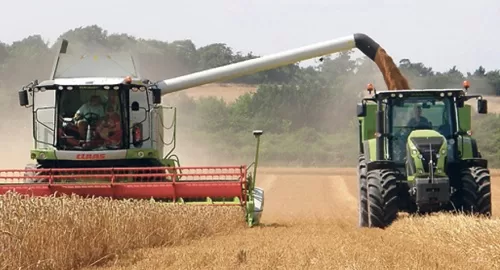PARIS – The wheat harvest outlook in Europe is varying widely as persistent rain in France and Britain increases chances of large production losses, while countries like Germany, Poland and Spain benefit from wet and warm spells, analysts said.
Rain-disrupted autumn planting in the northwest has already put Europe on course for its smallest wheat crop since 2020, when fields also endured soggy conditions.
In France, the state of the main soft wheat crop has declined further this month to stay at a four-year low, according to farm office FranceAgriMer.
After the area planted with wheat fell sharply, there was growing concern that yields may also suffer.
“It’s going to be a very tricky year for yields, which will certainly be below the average of recent years,” Francois Laurent, head of research at crop institute Arvalis, said according to Reuters.
A combination of excess moisture and mild temperatures means crops are relatively developed but with weak roots, making them fragile, Laurent said.
Maize may gain extra area after continued wet weather tempered earlier expectations that farmers would plant more spring barley. Arvalis now expects the spring barley area to be stable compared with last year, Laurent said.
In Britain, the Agriculture and Horticulture Development Board estimates the wheat area will be down 15% this year. It also said only 34% of wheat was in good or excellent condition by late March, against 90% a year earlier.
“We’ve had persistent wet weather since the autumn and this has really taken its toll,” said Helen Plant, senior analyst at the AHDB.
“There are many patchy fields and some crops have been kept because they are just good enough or because there wasn’t a viable alternative,” Plant said.
Rain-disrupted sowing has also put Germany on course for a smaller wheat crop this year, but field conditions were seen as favourable.
“Overall, German grain and rapeseed crops are looking in good condition and I don’t see widespread problems from waterlogging,” one German grains analyst said.
Crop growth was running about two weeks ahead of the usual pace, he said.
In Poland, there was a similar picture of good crop conditions and plant development about 2-3 weeks ahead of normal, according to Wojtek Sabaranski of analysts Sparks Polska.
“Poland’s winter crops look well, we haven’t had such problems with rain as in some west European countries,” he said.
Spring sowing has also proceeded on schedule and conditions should now allow maize planting to start, he added.
Elsewhere, rain has eased drought in Spain and improved conditions there led Strategie Grains analysts to increase slightly their monthly forecast of European Union wheat production.
Analysts are monitoring rain forecasts in Romania and Bulgaria to see if that alleviates dry conditions in the eastern European grain exporters.






Discussion about this post